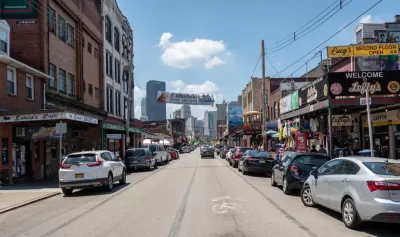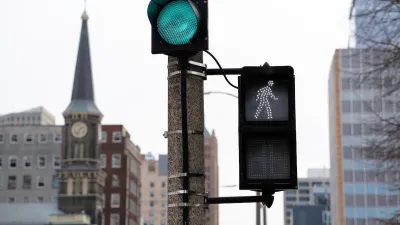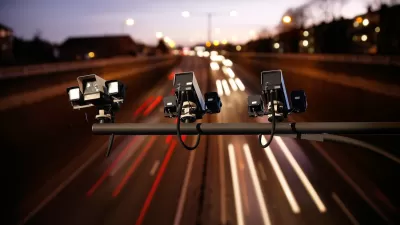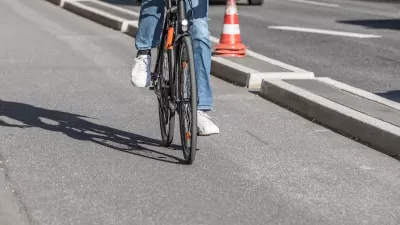The plan lays out strategies for improving pedestrian infrastructure and eliminating traffic deaths.

In an effort to support the city's mobility goals–which include reducing pedestrian deaths to zero, improving access to fresh food for all neighborhoods, and making one-mile trips easy and accessible without a car–"Pittsburgh's Department of Mobility and Infrastructure (DOMI) is launching the city's first pedestrian safety action plan." As reported by Katie Pyzyk in Smart Cities Dive, the plan "contains 10 priority strategies and actions to improve pedestrian safety that the department will implement over the next few years."
"Throughout, the plan emphasizes the need for inclusive and equitable solutions," particularly those targeting "vulnerable street users" such as the elderly, children, and people of color who "are disproportionately represented in crashes and fatalities." Pittsburgh's efforts follow other federal and local plans to eliminate traffic deaths and improve pedestrian safety. "[I]f we're going to be an inclusive city, if we're going to be a safe city, if we're going to be a livable city ... we really need to enhance and improve all the pedestrian environments," says DOMI director Karina Ricks.
"Like Pittsburgh, some cities devise dedicated pedestrian safety plans, while others incorporate that element into broader city plans. Milwaukee and Baltimore, for instance, are implementing complete streets policies that include pedestrian safety improvement elements."
FULL STORY: Pittsburgh unveils its first pedestrian safety action plan

Study: Maui’s Plan to Convert Vacation Rentals to Long-Term Housing Could Cause Nearly $1 Billion Economic Loss
The plan would reduce visitor accommodation by 25,% resulting in 1,900 jobs lost.

North Texas Transit Leaders Tout Benefits of TOD for Growing Region
At a summit focused on transit-oriented development, policymakers discussed how North Texas’ expanded light rail system can serve as a tool for economic growth.

Using Old Oil and Gas Wells for Green Energy Storage
Penn State researchers have found that repurposing abandoned oil and gas wells for geothermal-assisted compressed-air energy storage can boost efficiency, reduce environmental risks, and support clean energy and job transitions.

From Blight to Benefit: Early Results From California’s Equitable Cleanup Program
The Equitable Community Revitalization Grant (ECRG) program is reshaping brownfield redevelopment by prioritizing projects in low-income and environmental justice communities, emphasizing equity, transparency, and community benefits.

Planting Relief: Tackling Las Vegas Heat One Tree at a Time
Nevada Plants, a Las Vegas-based nonprofit, is combating the city’s extreme urban heat by giving away trees to residents in underserved neighborhoods, promoting shade, sustainability, and community health.

How Madison’s Tree Planting Efforts Are Growing a Healthier Community
Madison’s annual tree planting initiative is enhancing environmental resilience, public health, and community livability by adding 1,400 carefully selected trees citywide, with strong community and institutional support for urban forestry.
Urban Design for Planners 1: Software Tools
This six-course series explores essential urban design concepts using open source software and equips planners with the tools they need to participate fully in the urban design process.
Planning for Universal Design
Learn the tools for implementing Universal Design in planning regulations.
Ascent Environmental
Borough of Carlisle
Institute for Housing and Urban Development Studies (IHS)
City of Grandview
Harvard GSD Executive Education
Toledo-Lucas County Plan Commissions
Salt Lake City
NYU Wagner Graduate School of Public Service





























